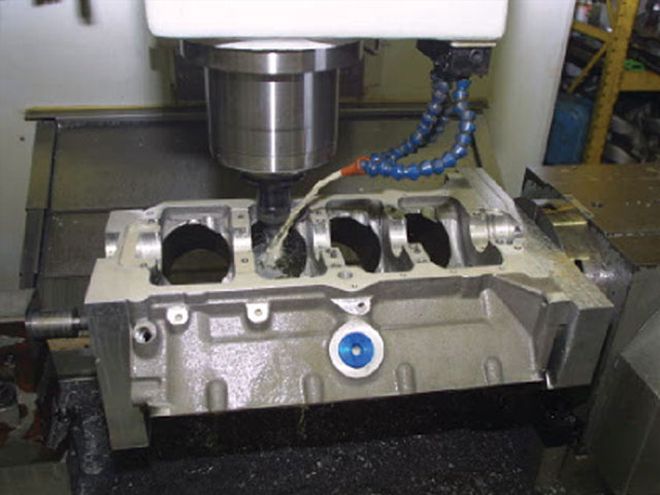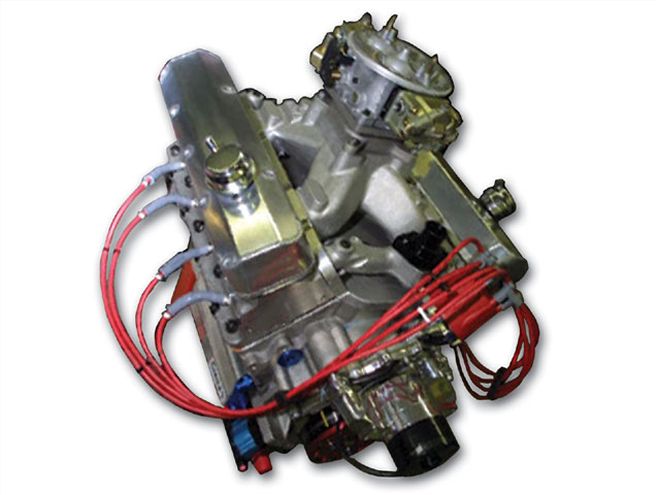
 The raw block is machined. then the sleeves are inserted, at which point the block is put back in the machine to bore, as well as to cut clearance for the long stroke crank.
The raw block is machined. then the sleeves are inserted, at which point the block is put back in the machine to bore, as well as to cut clearance for the long stroke crank.
AMC motors have always been stuck in an alternate universe by virtue of their physical stature. The 290 V-8 is externally the same size as the 390 and a full 100 ci smaller. Even the 401 shares the same external dimensions; so are they small-blocks or big-blocks? To confuse matters even more, Indy Cylinder Head, makers of all things Mopar, just released a new AMC block carved out of aluminum, able to support a whole lot of cubes.
We followed along as Indy and Payton's Performance screwed together the ultimate bracket bomber 500-inch (yes, we said 500-inch) AMC V-8 for Mr. J.T. Payton, an AMC junkie from way back when. So what is it, a small-block or a big-block? We can tell you that with a pair of Indy's own aluminum AMC cylinder heads, this engine made big-block power at big-block rpm levels-840 horses to be exact, at only 7,200 rpm (right now you big-block guys are screaming foul, but in racing terms, this is low-rpm). If that wasn't enough, the engine weighs a light-by-small-block-standards 450 pounds completely dressed out! Chevy's own rat motor tips the scales at a portly 700 pounds. Show us a big-block that can make that claim!
Indy Cylinder Head, gurus of the big-inch Mopar, and Payton's Performance, gurus of American Motors products, put together an all-new AMC V-8. So is it a big-block or a small-block? You be the judge. Just remember, whatever it is, it's 100-percent bad-to-the-bone.

Who Is J.T. Payton?
J.T. Payton is an AMC nut stretching back to 1972. When he was young and on a limited budget (read: broke), he had to go the most economical route. through trial and error, he found that AMC engines were easy to keep together, as well as cheap to build. The high-nickel blocks of the 390s and 401s are tough and easy to weld if need be. Factory dog-leg cylinder heads flow better out of the box than most competitors, and if one used a closed-chamber 401 head on an earlier 343, and fly-cut the pistons for piston-to-valve clearance, they would have a low-dollar 12:1 engine. Because aftermarket parts were in limited production, the AMC rodder would have to make the factory pieces work. AMC spawned innovation.
J.T. is the proprietor of Paytons Performance, the one-stop Rambler shop known as the Mecca of AMC performance circles. J.T. also races a Gremlin. So far, with only limited tuning under its belt, he's managed a very promising 8.55 at 156 mph-in a Gremlin nonetheless! J.T.'s good buddy Bill Tichenor-marketing manager at Holley Performance Products and instigator of this engine buildup-also discovered at an early age the advantages of the AMC. As a high school student wanting a musclecar and on a high school student's budget, he found the path to American Motors, as they tended to be more affordable than more mainstream musclecars. Bill found a '69 AMX for chump-change and drove it daily.